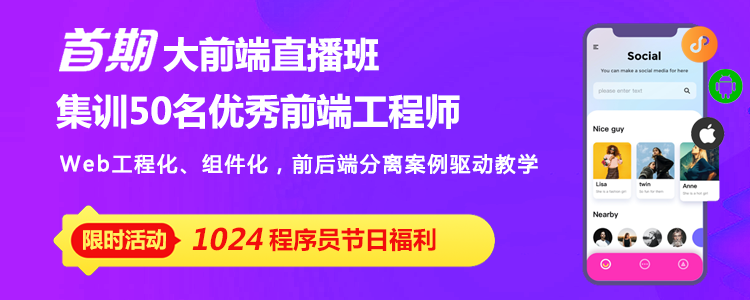
在前段项目中,请求 api 以及请求方式进行封装,该封装为了简单,更加好的管理后端所给的接口,请求代码的复用性,代码简单化。
安装 axios
$ npm install axios
创建目录文件
在 src 中创建 http 目录
在 http 目录中创建 http.js 用户所以请求的方式
在 http 目录中创建 api.js 用于存放后端提供接口
在 http 目录中创建 axios.js 用户做 axios 拦截器
在根目录下面 创建 vue.config.js 用户 请求代理配置
接下里就是代码
项目 /scr/http/http.js 中代码
import axios from 'axios';
export default {
/**
* get 请求
* @param url 接口路由
* @param auth 是否需要带登录信息
* @returns {AxiosPromise<any>}
*/
get(url, auth = false) {
if (auth) {
return axios.get(url, {headers: {Authorization: 'Your back-end user authenticates information'}});
} else {
return axios.get(url);
}
},
/**
* post 请求
*
* @param url 接口路由
* @param data 接口参数
* @param auth 是否需要带登录信息
* @returns {AxiosPromise<any>}
*/
post(url, data, auth = false) {
if (auth) {
return axios.post(url, data, {headers: {Authorization: 'Your back-end user authenticates information'}});
} else {
return axios.post(url, data);
}
},
/**
* put请求
* @param url 接口路由
* @param data 接口参数
* @param auth 是否需要带登录信息
* @returns {AxiosPromise<any>}
*/
put(url, data, auth = false) {
if (auth) {
return axios.put(url, data, {headers: {Authorization: 'Your back-end user authenticates information'}});
} else {
return axios.put(url, data);
}
},
/**
* 删除
* @param url 接口路由
* @param auth 是否需要带登录信息
* @returns {AxiosPromise}
*/
del(url, auth = false) {
if (auth) {
return axios.delete(url, {headers: {Authorization: 'Your back-end user authenticates information'}});
} else {
return axios.delete(url);
}
},
/**
* 上传文件
* @param url 接口路由
* @param file 接口文件
* @param auth 是否需要带登录信息
*/
uploader(url, file, auth = false) {
let param = new FormData();
param.append('file', file)
if (auth) {
return axios.post(url, param, {headers: {Authorization: 'Your back-end user authenticates information'}})
} else {
return axios.post(url, param)
}
},
}可以在 项目 /scr/http/ 下面创建 一个文件 api 然后在里 根据 项目模块 创建 接口文件 方便管理
项目 /scr/http/api.js 代码
import Goods from './api/goods.js';
export default {
// 首页
Index: {
index: '/index/index'
},
// 个人中心
Home: {
UserInfo: '/user/info'
},
// 当然也可以用文件方式进行管理
Goods: Goods
}项目 /scr/http/api/goods.js 中代码
export default {
GoodsShow: '/goods/default'
}项目 /scr/http/axios.js 中代码
import axios from 'axios';
// 请求拦截
axios.interceptors.request.use(config => {
// 1. 这个位置就请求前最后的配置
// 2. 当然你也可以在这个位置 加入你的后端需要的用户授权信息
return config
}, error => {
return Promise.reject(error)
})
// 响应拦截
axios.interceptors.response.use(response => {
// 请求成功
// 1. 根据自己项目需求定制自己的拦截
// 2. 然后返回数据
return response;
}, error => {
// 请求失败
if (error && error.response) {
switch (error.response.status) {
case 400:
// 对400错误您的处理\
break
case 401:
// 对 401 错误进行处理
break
default:
// 如果以上都不是的处理
return Promise.reject(error);
}
}
})上面已经准备好了。那么接下来就是 项目 /scr/min.js 中添加代码
项目 /scr/min.js 中代码
import Vue from 'vue';
import App from './App.vue';
import api from './http/api';
import http from './http/http';
// axios 拦截器
import './http/axios'
// 对后端接口 进行全局注册
Vue.prototype.$api = api;
// 对请求方式 进行全局注册
Vue.prototype.$http = http;
那么接下来就是使用了
项目 /src/views/index/index.vue 中我们对他进行使用
<template>
<div>
</div>
</template>
<script>
export default {
name: "Index",
mounted() {
this.handle()
},
methods: {
handle(){
// 当然如果你需要带登录信息去请求这个接口 可以在 路由后面跟上 true 或者 false 来决定是否在请求的时候带登录信息
// 我们这样进行封装 就对一个 请求封装好了。
this.$http.get(this.$api.Index.index,true).then((result) => {
})
}
}
}
</script>
<style scoped>
</style>接下来是 代理配置
项目 /vue.config.js 代码
// 后端请求地址 注意[他会根据你环境的不同从而获取的 env 文件不同]
const target = process.env.APP_API_URL;
module.exports = {
devServer: {
// 所有的接口请求代理
proxy: {
'/api': {
target: target,
changeOrigin: true,
ws: true,
pathRewrite: {
'^api': ''
}
}
}
}
}以上就是在 Vue 里面对 Axios 进行封装的详细内容,更多请关注php中文网其它相关文章!



















